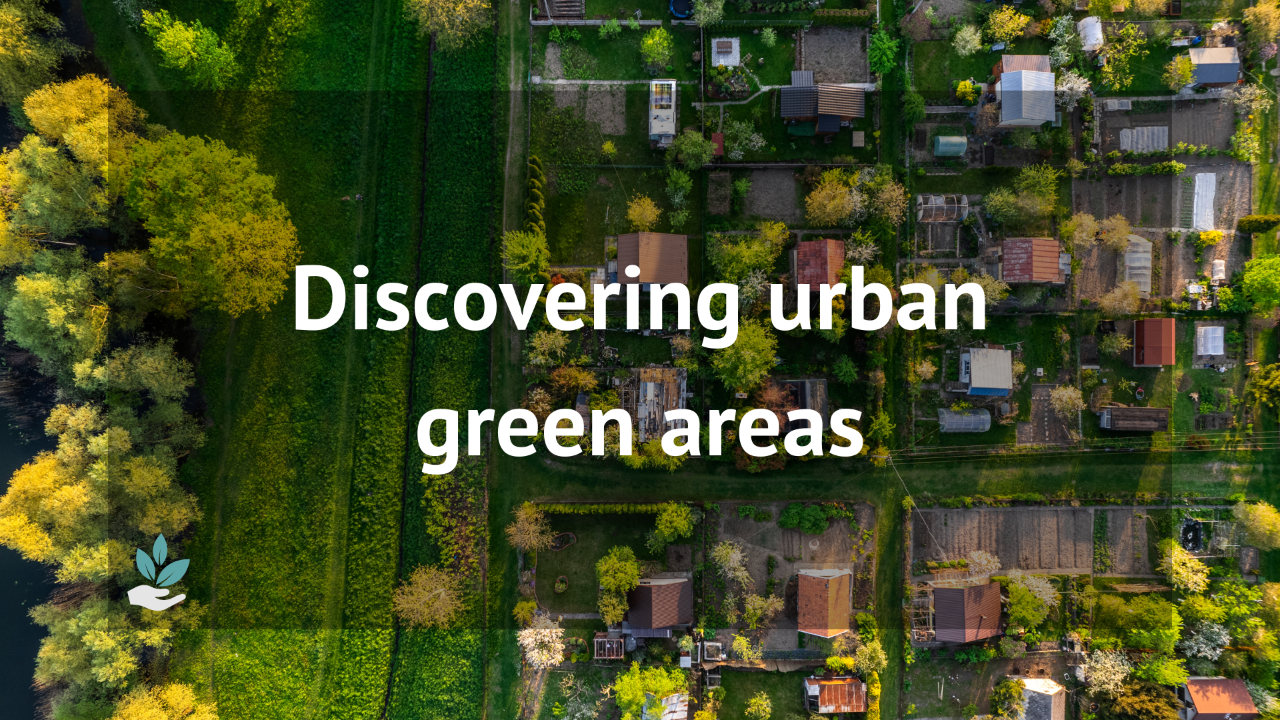Discovering urban green areas & wild animals in cities

The importance of urban green spaces
We know going for walks is a good idea to connect with the world around us, disconnect from work, get away from screens, enjoy time with family or friends, or do a bit of self-care by practising walking meditation. However, living in a busy city or an urban area does not always make this easy. Considering the high temperatures we are currently experiencing due to climate change, we might need to adjust the times we walk and where we walk. More and more towns and cities are planting and maintaining green spaces with trees and shrubs which are not only beautiful and soothing to look at but also provide immediate benefits. The air is cooler, you can sit in the shade, and everything becomes quieter which can help you feel more relaxed. Urban green spaces are important to your wellbeing, as well as other people, animals, and other vegetation sharing these spaces.
Urban green areas are vital components of cities and urban environments. These areas encompass various types of natural and semi-natural spaces, such as parks, gardens, community gardens, playgrounds, green corridors, and even rooftop gardens. Urban green spaces offer numerous benefits to both the environment and the wellbeing of urban residents. These are some of their key, well-known, benefits:
- Air quality improvement: Green spaces help absorb pollutants and release oxygen, contributing to improved air quality in urban areas.
- Temperature regulation: Vegetation provides shade and helps reduce the urban heat island effect, making cities more comfortable during hot weather. The cooling effect of trees reduces the surface temperature of European cities in the summer by up to 12 °C in some regions.
- Escape from urban noise: Green spaces offer a reprieve from the noise and hustle of urban life, providing a tranquil environment for relaxation and reflection.
- Stress reduction and enhanced mood: Spending time in green areas has been linked to reduced stress levels and improved mental wellbeing. Interacting with nature and being surrounded by greenery can lead to improved mood and decreased feelings of anxiety and depression.
- Cognitive restoration: Being surrounded by nature or greenery can enhance cognitive function, help individuals recover from mental fatigue and stimulate creativity, benefiting work performance and problem-solving abilities.
- Social interaction: Green spaces serve as communal areas where people can gather, socialise, and build a sense of belonging.
- Physical activity: Parks and recreational spaces provide opportunities for outdoor activities such as walking, jogging, yoga, and sports.
- Visual appeal: Urban green areas enhance the aesthetics of cityscape and provide a pleasing contrast to concrete and steel structures.
- Biodiversity support: Urban green areas can host a variety of plant and animal species, contributing to urban biodiversity and ecosystem health.
Overall, urban green areas play a vital role in promoting holistic wellbeing for all urban residents, offering a range of physical, mental, social, and emotional benefits that contribute to a higher quality of life in cities. You can of course also create green spaces in and around your home, on your window sill, your balcony, and your garden. Every green space offers unlimited possibilities of life, hosting all types of creatures, and becoming a pillar of wildlife in cities.

 Wild animals in cities
Wild animals in cities
Urban green areas play a crucial role in providing habitat and support for urban wildlife, contributing to the overall biodiversity and ecological balance within cities. Despite the concrete and steel surroundings, these spaces offer essential refuges for various plant and animal species. Wild animals in cities have adapted to flourish in human-dominated environments. As urban areas expand and encroach upon natural habitats, many animals have found ways to coexist with humans, utilising urban spaces for shelter, food, reproduction, socialising, and play. This phenomenon highlights the resilience and adaptability of various species in the face of urbanisation. Wild animals commonly found in cities or urban areas belong to different taxa: from the most iconic urban birds - pigeons - to lizards, toads, crows, rats, squirrels, butterflies, bees, foxes, among many others, and even large animals like deer and coyotes.
Urban green areas encompass a variety of ecosystems, thus providing animals with options to select environments that match their specific needs and support their growth and best quality of life. For instance, different bird species might prefer nesting in trees, shrubs, or grasses, all of which can be found in urban green spaces. Green areas in urban settings often support a range of plant species that produce seeds, fruits, nectar, and foliage. This serves as a reliable source of food for insects, birds, small mammals, and even larger predators. Another key point of urban green spaces is related to the seasonal migrations of many animals like birds and insects. Urban green areas can serve as crucial stopover points, providing food, water, and shelter during these long and difficult journeys. Such spaces become essential in ensuring the successful completion of migration routes. In summary, urban green areas offer a diverse range of benefits to animals, creating essential habitats that support their survival, breeding, and overall wellbeing.
The coexistence of animals and humans in these spaces underscores the need for continued efforts to preserve and expand urban green areas, ensuring a harmonious and sustainable urban environment for all residents, both human and other animals alike. It is important to note that while urban wildlife can provide opportunities for human interaction with nature, there are challenges associated with their presence. These challenges include conflicts with pets and human activities, potential disease transmission, and disruption of ecosystems. The coexistence of urban wildlife and humans requires finding a balance that benefits both. Proper waste management, compassionate conservation and responsible behaviour by residents can contribute to a more harmonious relationship between urban dwellers and the wildlife they share their environment with.
The Earth Charter Cities Manifesto recognises urban biodiversity and the value of ecosystem services. You can read more about this HERE
AnimalConcepts has been an Earth Charter International Partner for some years and uses it as a lens in almost all the work we do. Join us and learn more HERE on how you can support the Earth Charter too.


